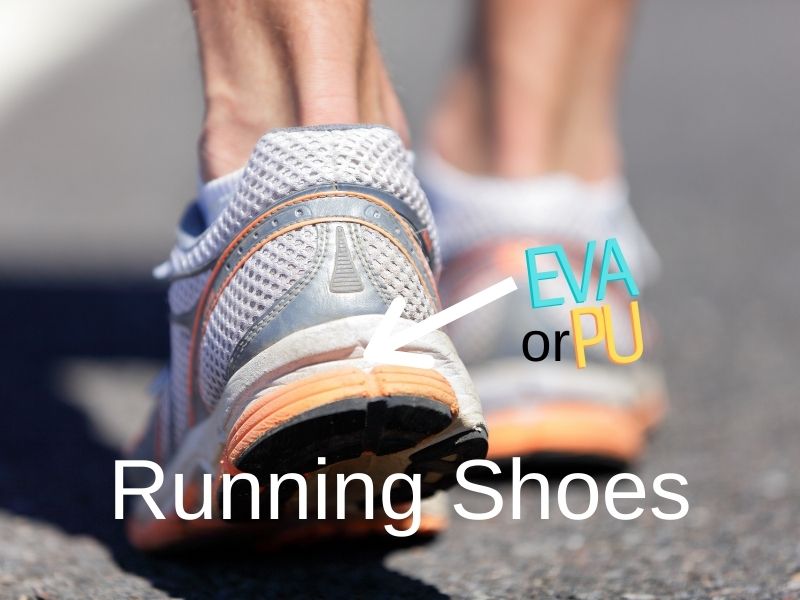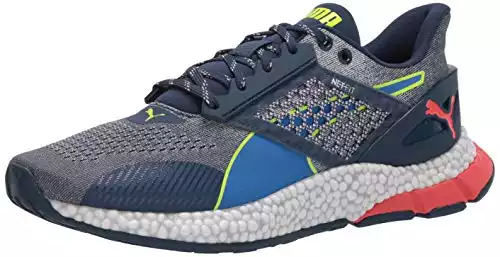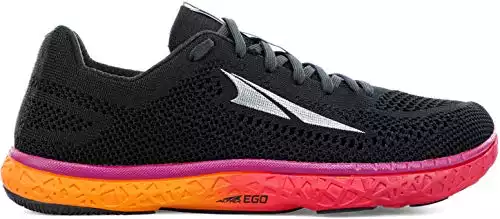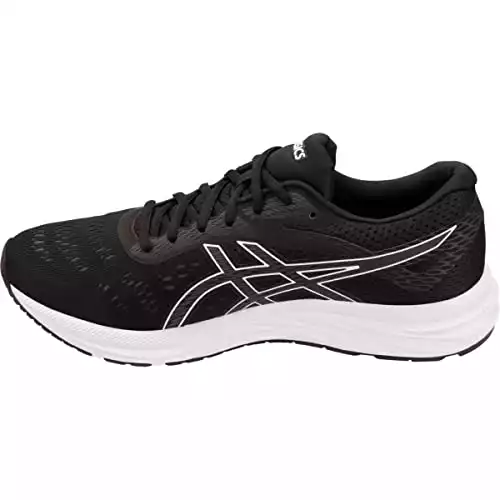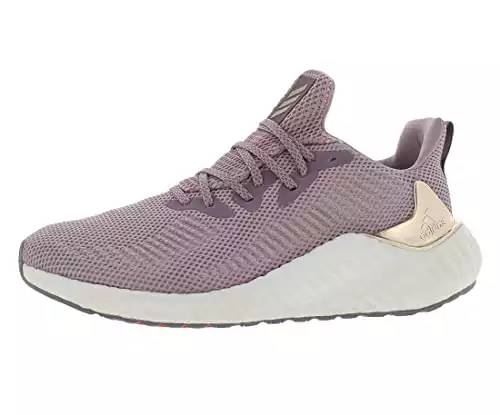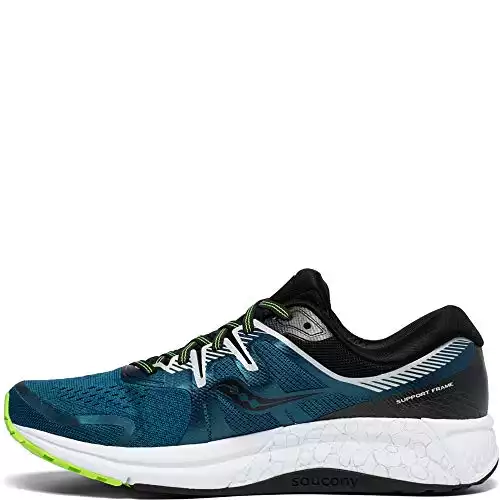I am wearing my Nike Winflo running shoes right now, and the midsole is made of EVA. They are very soft to walk in and feel comfortable running in. Different types of soles use different materials, and many companies custom-make their foam for different shoes.
The best-running shoe foam is likely a mix of EVA-type foams and PU foams. Your shoe foam should fit how you use your running shoe. Eva is very good for cushioning, and PU is very good for resisting compression.
I personally would rather have a soft cushioning running shoe, rather than one that has great support over time. Long-distance runners and hikers can really benefit from the support that PU provides.
What are EVA and PU foams?
Eva foam is a foam that is soft and made of Ethylene-vinyl acetate. It is good at cushioning your feet as you run.
PU foam is a foam that is denser and usually heavier than EVA and is made of polyurethane. It is good at providing good support over time.
In the video below he explains the difference between PU and EVA hiking boots. He doesn’t talk about comfort though, and that’s probably a good idea. Comfort can vary from person to person. Each shoe can vary in how its midsole is made, and some may combine both PU and EVA to make a comfortable, yet durable shoe.
Before you decide which midsole is best for you, let’s look at some of the top-selling running shoes and what they are using for their midsoles.
Customers are giving these shoes top ratings at runrepeat.com, and a lot of it comes down to levels of comfort and performance.
The video of running shoe anatomy explains the parts of a running shoe and identifies the midsole.
Shoes and their Foam
| Shoe Name | Midsole Type | Properties | Best Used For |
|---|---|---|---|
|
AD | Their proprietary foam is PROFOAM. It is a high rebound EVA foam. Possibly a mix of EVA and PU. | High energy return. Lightweight. | Walking. Short to long runs. (SEE YOUTUBE VIDEO) |
| Their proprietary foam is Altra EGO. It has elastic foam (EVA?) with TPU ( thermoplastic polyurethane) foam. | Firm, yet soft, with high energy return. Lightweight. | Good for longer runs. Minimalist runners. (SEE YOUTUBE VIDEO) | |
| Their proprietary foam is AmpliFoam. and foam insole. This is an EVA foam. Possibly with some PU. | Durable, yet soft. Gives good flexibility. | Walking and running. (SEE YOUTUBE VIDEO) | |
| Their proprietary Boost foam is dual-density. Possibly a mix of EVA and PU. | Good energy return and cushioning support. | Walking. Good for short to long runs. (SEE YOUTUBE VIDEO) | |
| Their proprietary PWRFOAM foam. PossiblyEVA with some PU foam. | Good cushioning and comfort, with responsiveness. | Walking. For short to long runs. (SEE YOUTUBE VIDEO) |
As you can see, most of the shoes above try to combine support, performance, and comfort. Several mix different types of foam so their shoes can perform well when running longer distances and remain comfortable.
Decide on How You Will Use Your Shoes

A walking shoe is usually soft and comfortable. You may not want to get a running shoe when going walking, but for some individuals that is exactly what they need because these shoes can provide some additional support.
Someone exercising or running for 30 minutes a day, 3 times a week, might decide to get any of the shoes on the above chart. They are all fairly supportive and work well when running or exercising.
If you are running long distances, then you want to get a fairly supportive shoe. You may need to be pickier about getting a shoe that helps your foot do more of the work. A PU midsole might be helpful.
Since many of the shoe bands don’t disclose their midsole foam composition very clearly, you will need to check the specifications on how they are intended to be used. Also, check user ratings to see how they perform on longer runs.
Each person is different and will need a shoe that is tailored to their needs. For example, if I were trying to help fix a foot issue I had, I might want to buy a pair of minimalist shoes. Asking for help from my doctor and physical therapist to get a helpful shoe. (See Video Below)

The shoe Xero Prio doesn’t have a midsole, so your foot can have a more natural position while walking or running.
This mighty help someone with plantar fasciitis with the support of a physical therapist for guidance.
When you consider your needs and your intended use, you will better find a shoe that will suit your specific needs.
What is an EVA Foam Midsole good for?
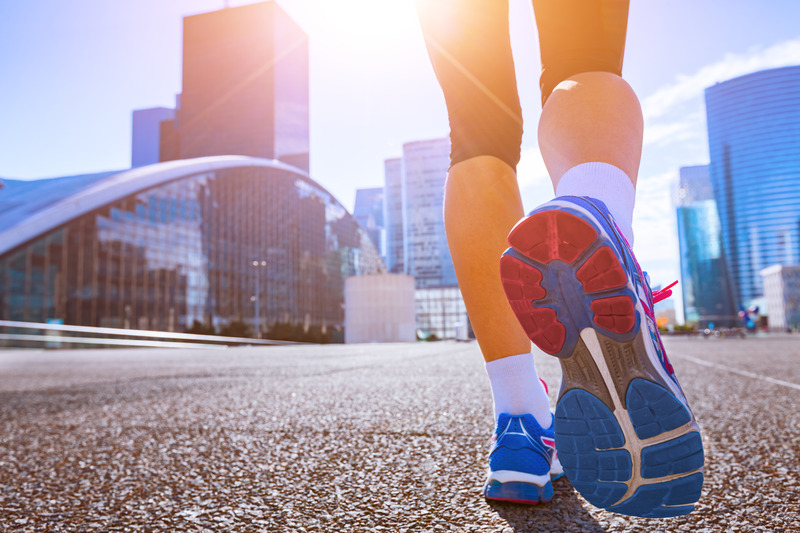
Various shoe midsoles are made with EVA. It can provide great cushioning and may be found in walking shoes and running shoes. It is made in different densities types and can be very lightweight. Therefore, many shoes can use it in the midsole, outsole, and or the insole to provide comfort and flexibility.
EVA does break down over time and eventually starts to provide less and less support for your foot. You’ll need to replace your shoes every 300 – 500 miles (article) or 6-12 months.
When running the foam will compress and will not provide as much support during long-distance running. The next day when you want to run again, the foam may not be fully decompressed. You’ll likely need to wait about 48 hours for the foam to fully expand again so it can provide about the same level of support.
EVA midsoles would be good for shorter runs, trips to the gym, and walking for a couple of hours. That being said, each shoe design and foam density are different. Doing your customer review research will go a long way toward finding out how these types of shoes have worked for others.
What is a PU Foam Midsole good for?
In the video for the Wave Horizon 4, we see the PU foam is used for stability and support.
A PU foam midsole helps to provide runners more support for long-distance running. An since the foam doesn’t compress much, runners can get the all-day support they need. The shoe can do some of the work that the legs and feet would normally do.
PU will not compress like EVA. While EVA foam might reduce its effectiveness by half after a year of use, PU foam remains almost as effective. This means that running with a PU foam shoe, you will likely get more support over time.
As seen in the Wave Horizon video, their shoe is a combination of different types of foam and rubber. Therefore, it’s still likely you’ll need to replace your shoe after 300-500 miles of use.
Yet, the benefit of support and energy return will continue almost as effectively because of the PU foam.
Which Type of Foam is Best?

Most of the name-brand shoe companies are trying to combine the attributes of both EVA and PU foams together. They runners to have good support that comes from PU foam, with the comfort and cushion of EVA foam.
With so many different types of shoes on the market, it’s a good idea to decide what is most important to you in a shoe. If you will be running longer distances, then it’s very important to get a very supportive shoe. In that case, a PU midsole can help.
If cushioning is important because your joints need some extra soft shoes, then an EVA midsole could help.
Other runners might want to go minimalist. They would need a minimalist shoe runner will little to no foam. This could help their feet get stronger and help with natural biomechanics while running.
Some Pros and Cons of Each Foam Type
PU FOAM
Pros
- Resist compression
- Good energy return
- Last a long time
- Give good support
- Helps runners run long distances
- Takes on some of the work done by foot and leg
PU FOAM
Cons
- Can be heavier than EVA
- May not distribute weight or mold to feet well
- May cost more (article) than a EVA midsole running shoe
- Contains isocyanates. Potential carcinogen.
EVA FOAM
Pros
- Soft
- Very cushioning
- Light weight
- Absorbs shocks very well
- Can help distribute weight well. Molds to your foot.
- Flexible
EVA FOAM
Cons
- Tends to compress easily
- Decreasing support over time
- Contains formaldehyde. Potential carcinogen.
- May absorb some water
Deciding on a Shoe
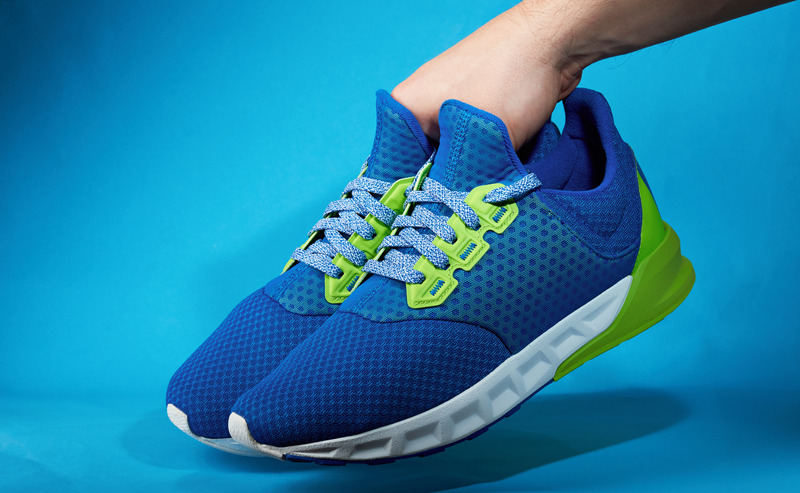
If you’re unsure about which shoe to get because there are so many options, you not alone. For instance, many brands have a proprietary mix of foams materials that can give runners across many brands a good experience while running.
Shoe companies are trying to meet their customers ‘ needs, by creating foams that help runners get support and comfort. In other words, they are mixing various foams and densities to come up with the best fit for specific types of running shoes.
My advice for those looking to purchase the best running shoe for themselves would be to decide on specific attributes you want in a shoe. After that, when you go shopping you can pick one that most meets your needs.
Don’t forget to try on at least three pairs or more. You might be surprised how well some meet your needs much better than others, even if they look the same.
Conclusion
The best foam midsole is general PU for long-distance running and EVA for shock absorption. You may find both qualities in shoes that have a mix of foams. While PU midsole shoes are more expensive, they generally will last longer.
Running shoes should meet your needs. So, deciding what’s most helpful can help you choose a midsole that will work well for you. Above all, the midsoles should fit how you’re using your running shoe and the shoes should fit on your feet well.

